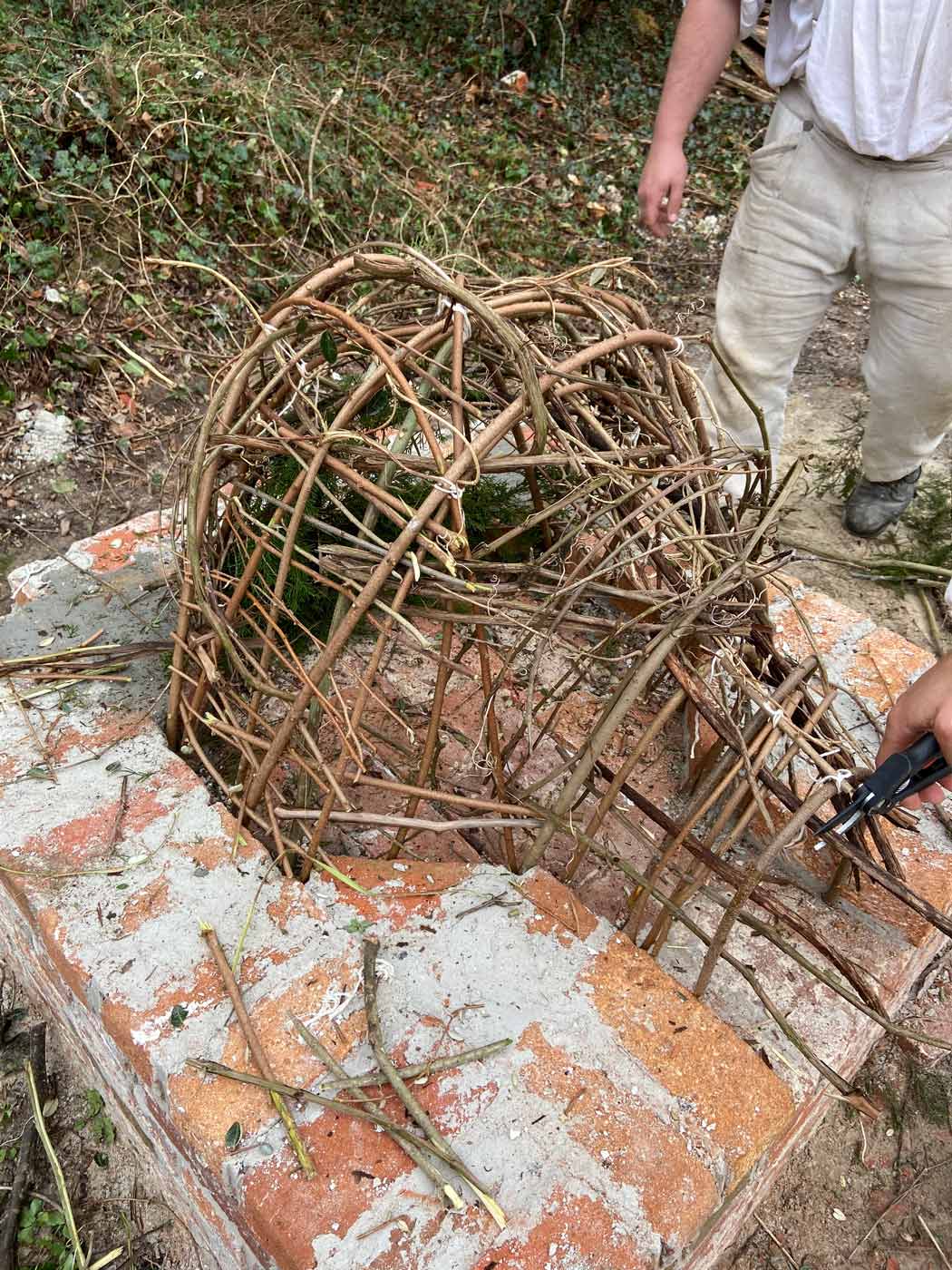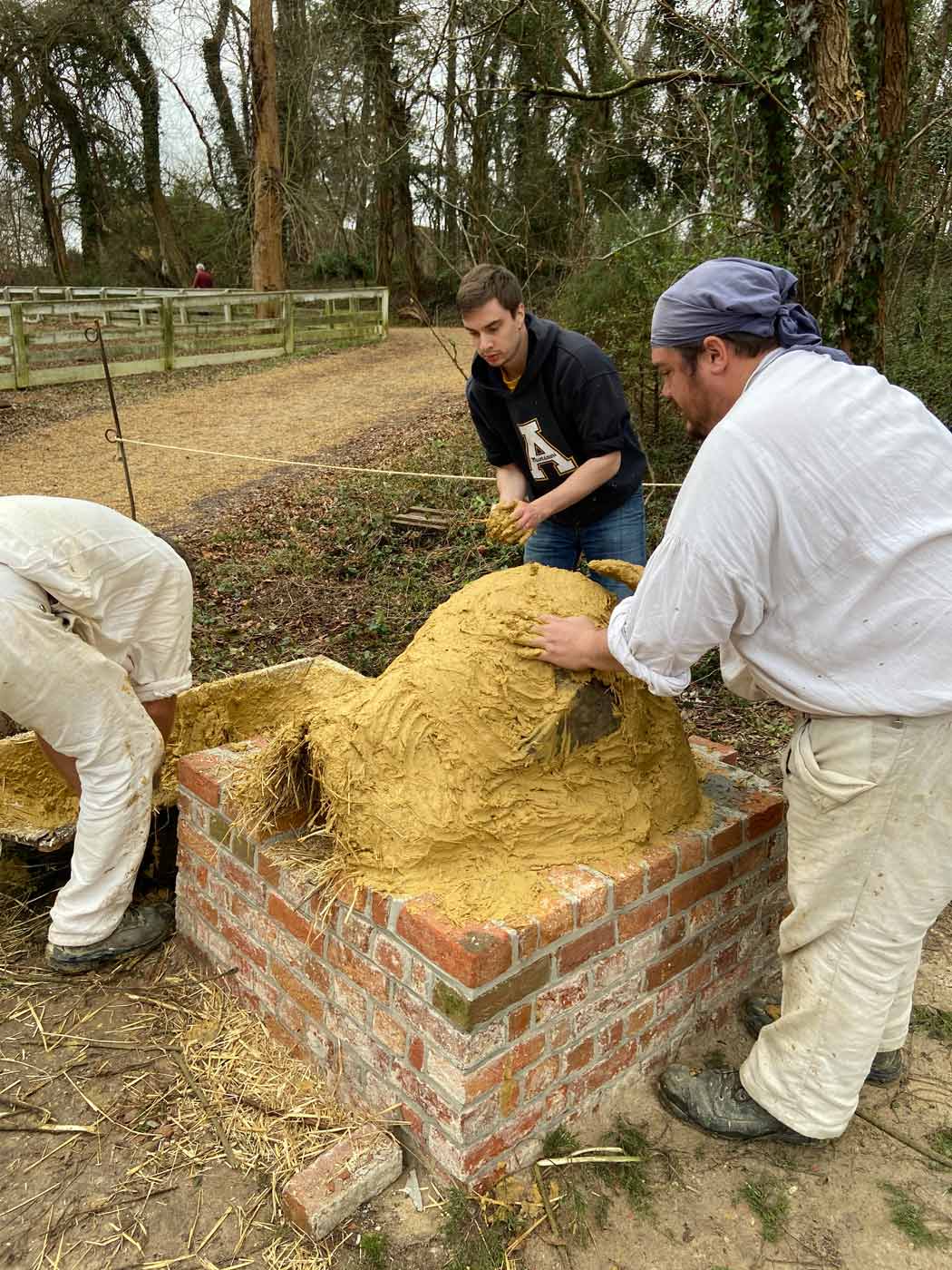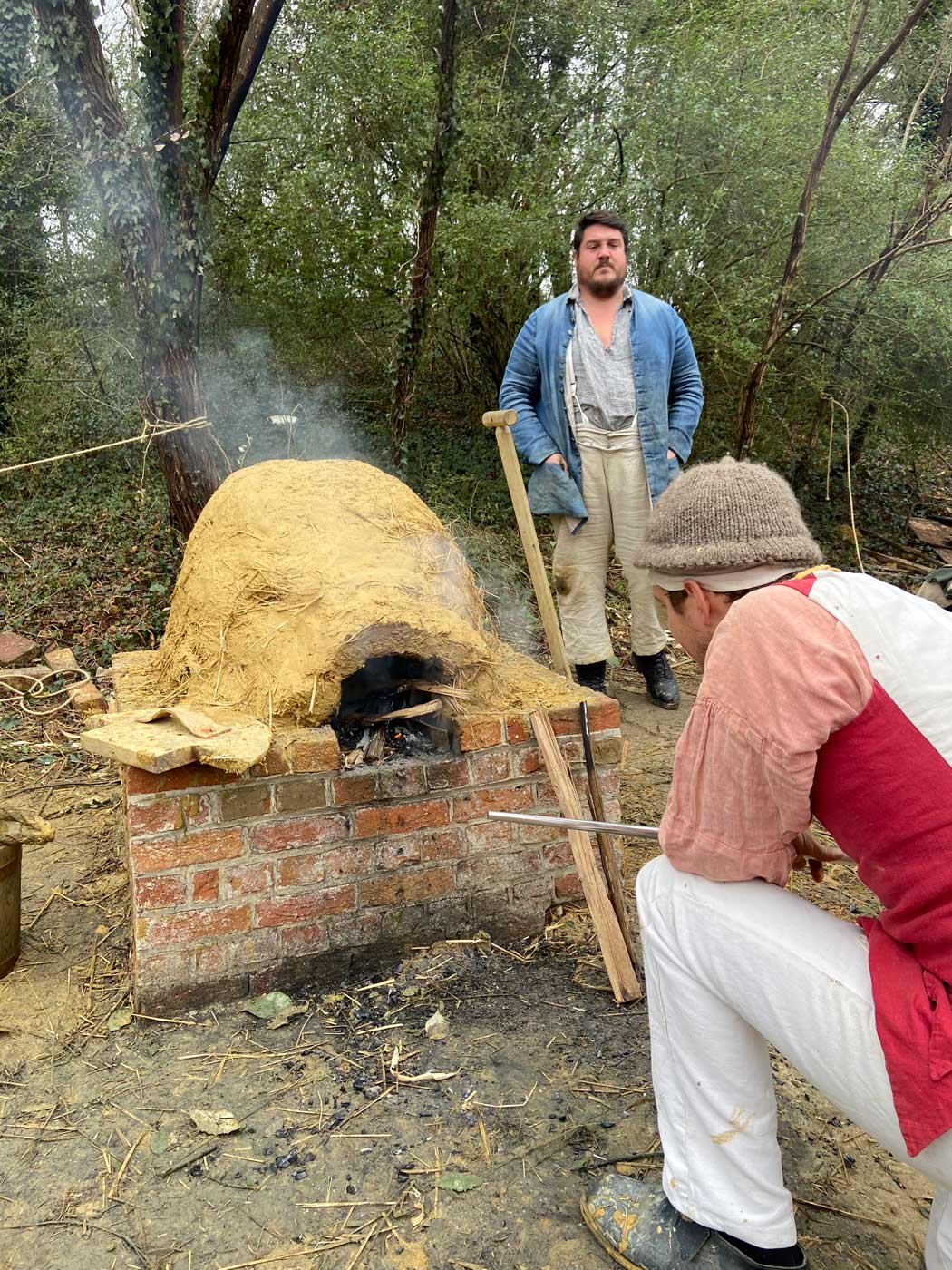Baking Bread in the Brickyard
If you’ve visited our Brickyard, you know that you can expect a variety of things to be happening. From treading clay, to molding bricks, to firing, something exciting is always happening and depending on what time of year it is, that something changes. This year something new worked its way into the Brickyard schedule. Every Tuesday for the months of February and March, we built an earthen oven made from cob (a mixture of clay and straw) then baked in it. Why are we making a bread oven in the Brickyard? The simplest answer is: why not? We had the time, we had the materials, and we did the research.

As historic tradespeople, we all have a passion for what we make, but sometimes we get the itch to step outside our comfort zone. Making and interpreting these cob ovens was not only a new experience for our guests, but for us as well. And when you’ve spent the last several weeks unstacking a kiln of 21,000 bricks, anything is a welcome change of pace. So, we began experimenting and soon were making the ovens in front of guests!
All the ovens required were sticks, clay, straw, and a good bit of patience. We began by building the frame for the oven. For this, we would take flexible green sticks and bend them over into the dome shape of our oven. Then we wove in smaller sticks and vines. When complete, the frame looked like a rough, upside-down basket. Next, we draped an old canvas tarp over the frame to cover up any gaps and allow us to pack on the clay and straw mixture. Finally, we daubed on the cob, a mixture of wet clay and straw. This mixture is a veritable wonder material that holds it shape well and is much stronger than just clay.
Once the cob had been daubed over the entire frame, it was time to dry out the oven. This is where the patience comes in. To ensure maximum strength and efficiency, we had to maintain a fire within the oven for several hours, usually from about 10:30 am to around 4:00 pm. Keeping a good fire going within the oven proved to be the trickiest part of the process and we went through a lot of trial and error (emphasis on error) before we finally got it down to a science.
After the oven had been fully dried out, we would scrape out all the hot coals, then put in the dough, seal up the mouth of the oven, and let it bake! And because our expertise lies in firing bricks, not baking bread, this took some getting the hang of as well. However, with some patience and more than a little friendly advice from the Foodways staff, we soon were able to bake some delicious bread (and we only burned it once!).

This type of temporary earthen oven is something that would have been fairly common in 18th-century Virginia. Compared to a permanent oven that could be made of upwards of 500 bricks, this humble oven only requires materials that are easily accessible and extremely cheap. An army on the move cannot haul around 500 hundred bricks, so what do they do when they need a relatively quick and easy way to provide food? Make a cob oven! What would a poor farmer, who could not afford expensive brick, use to build their oven? That’s right, cob! This versatile and accessible way of baking would have been crucial for many colonial Virginians and we are excited to have been able to bring it into the 21st century here at Colonial Williamsburg.

Building this oven was a great experience for us and our guests. We got to research and learn about a piece of history that we don’t normally come in contact within our day-to-day Brickyard activities. It also provided amazing collaboration between multiple trade shops. Barbara from Foodways came down on several occasions to help us gauge the temperature of the oven and guide us through the mysteries of baking. And the tin shop made us a special elongated funnel that allowed us to blow air into the fire within the oven without having to get too close.
Building and interpreting this oven played right into the Brickyard’s strengths. We are a site that excels at hands-on learning and this was on full display during the oven program. Guests could get right in there with us and help with daubing the oven frame with cob. We also taught several guests (young and old) how to start a fire with flint and steel. All in all, “From Daub to Dough” was a success on every level and it gave those of us at the Brickyard an opportunity to showcase our creativity. Who knows what we’ll cook up next? Stay tuned when we reopen!
Nicholas White is the newest Apprentice of Masonry Trades at the Brickyard, having started in January of 2020. He worked casually at the Brickyard in summer 2016 and says, “I was excited to dive into this job full-time! I love the work we get to do in the brickyard, collaborating with my colleagues through new and creative programming, and providing an amazing experience for our guests!”
